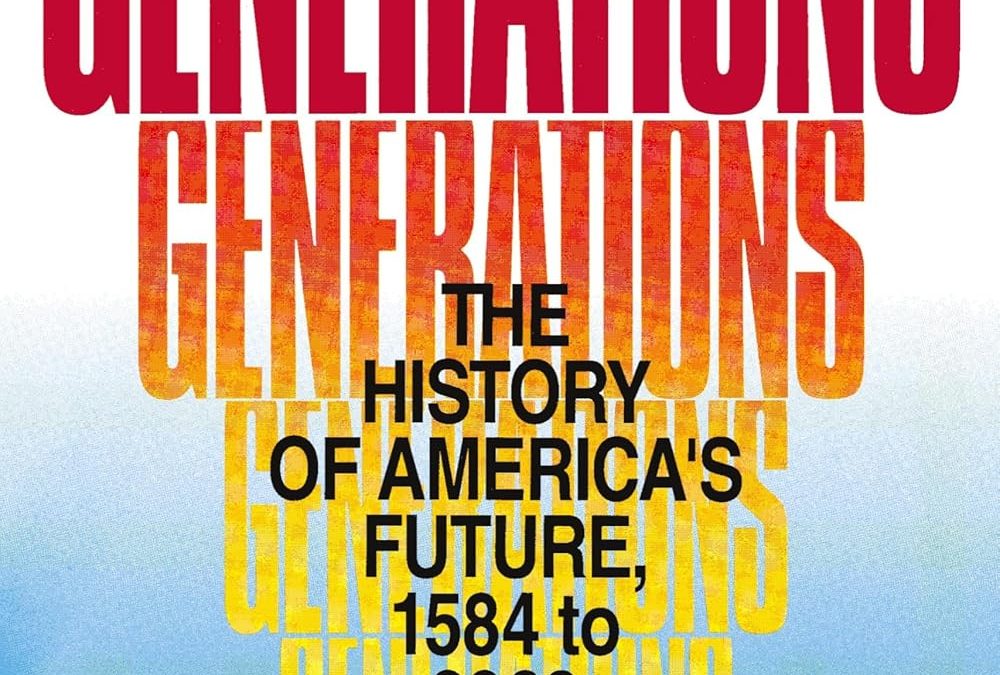Generations presents a sweeping theoretical framework for understanding American history through the sequential rise and interaction of generational cohorts. The book’s central thesis, which would become the foundation for the authors’ subsequent work, is that history follows a cyclical pattern driven by a recurring sequence of four generational “archetypes,” each with a distinct collective personality and role in society.
The book’s content is structured to build this theory from the ground up. It begins by defining its core concepts: a “generation” as a cohort sharing a common location in history and a collective life-cycle, and a “saeculum” as the span of a long human life (approximately 80-90 years), which constitutes a full historical cycle.
The core of the book’s argument lies in the identification of four recurring generational archetypes that appear in the same fixed order throughout the saeculum. These are:
- Prophet: A generation born after a great crisis, whose values become the dominant ideals of an emerging new society. They are described as visionary and moralistic, entering a spiritual awakening in midlife.
- Nomad: A generation born during a spiritual awakening, described as pragmatic and risk-taking, who mature into a protective and often cynical adulthood.
- Hero: A generation born after an awakening, portrayed as powerful and institution-building, who are nurtured as children and later unite to conquer a great crisis.
- Artist: A generation born during a great crisis, described as sensitive and conformist, who mature into leaders of a post-crisis world, focusing on expertise and process.
The majority of the book’s content is a detailed historical narrative that applies this model to Anglo-American history from 1584 to the present. The authors methodically categorize every generational cohort in this timeline—from the Puritan Generation to the Baby Boomers—into one of the four archetypes. They argue that the passing of these generations through their respective phases of life (youth, rising adulthood, midlife, elderhood) triggers the transitions between the four phases of the historical cycle: a High, an Awakening, an Unraveling, and a Crisis.
The book concludes by projecting this pattern into the future. Based on the position of then-current generations (identifying Baby Boomers as Prophets, Gen X as Nomads, and Millennials as the next Hero generation), Strauss and Howe predicted that America was approaching a great Crisis period around the turn of the 21st century, comparable to the American Revolution or World War II, which would be resolved by the emerging Hero generation.
The tone of the book is grand and scholarly, presenting its theory as a comprehensive key to understanding the rhythms of American history. Its content is a blend of historiography, sociology, and speculative forecasting, all unified by the consistent application of its cyclical generational model.
